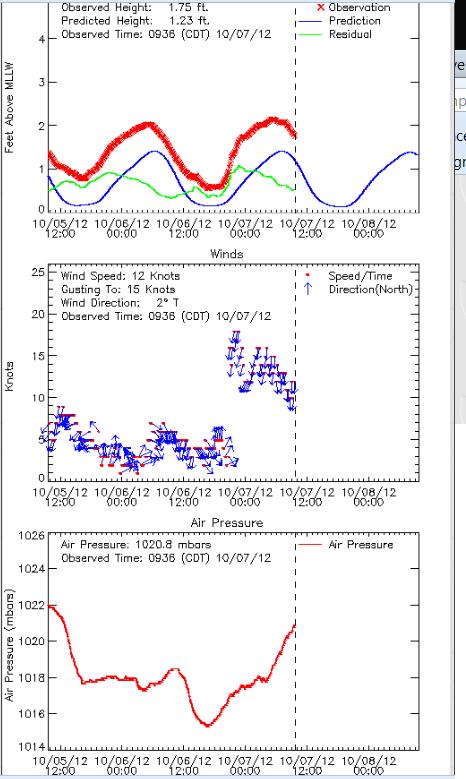Using technology to monitor conditions in real time defeats yet another common misconception amongst our angling community.
It's commonly accepted in the southeast Louisiana fishing community that winds out of the north and west generally lower water levels and that winds out of the south and east will raise water levels, with SW (southwest) winds still lowering water levels.
But what about NE winds, or NNE winds?
Check out this snapshot of the Shell Beach Buoy taken from October 6th and 7th.
You can see where a cold front was coming in on the night of the 6th/7th and what that did to the winds and air pressure.

It is real time monitoring like this that can help you develop your understanding of the Louisiana marsh without ever having to launch the boat.
I have found that Lake Borgne is a powerful body of water that will dictate what happens to the tide. Even a north wind coming slightly out of the east can shoot down Lake Borgne and pump life into the marsh.
It's too bad because I didn't go fishing. It makes me wonder if I could have still caught trout like I did the day before. (100 keepers, but a lotta throwbacks. Awesome bite. Shrimp jumping out of the water!)
This goes to show that by monitoring water and wind conditions you can learn a lot about inshore fishing without having to leave home. Now you're Fishing Smarter.
